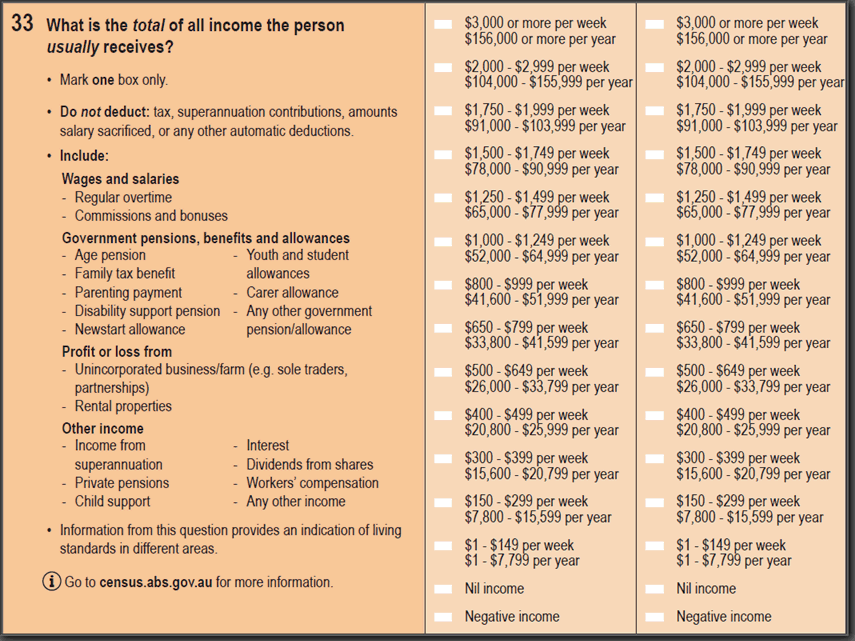Equivalised Total Household Income (HIED)
Equivalised Total Household Income is total household income adjusted by the application of an equivalence scale to facilitate comparison of income levels between households of differing size and composition. The 'modified OECD' equivalence scale is used.This variable is applicable to Family, Lone Person and Group Households.
How this variable is created
This variable is created by summing the personal incomes reported by all household members aged 15 years and over and applying a weighting according to the 'modified OECD' equivalence scale. The equivalence factor is built up by allocating points to each person in a household (1 point to the first adult, 0.5 points to each additional person who is 15 years and over, and 0.3 to each child under the age of 15) and then summing the equivalence points of all household members.
As personal income is collected in ranges, median values are assigned to each range using data from the Survey of Income and Housing. For more information about this survey see the Survey of Income and Housing, User Guide.
Households where all or at least one member aged 15 and over did not state an income are set to 'All incomes not stated' and 'Partial income stated' respectively. Households where at least one member aged 15 and over was temporarily absent on Census night are also set to 'Partial incomes stated'. An image of this question is provided below.
Variable history
This variable was first used in 2006, though other measures of household income had been used in previous censuses. For 2016 the categories for annual income dollar ranges have been revised.
Non-response rate
Non-response rate only applies to data items that directly reflect responses to individual Census form questions. Equivalised Total Household Income does not have a non-response rate as it is a derived value created during Census processing for applicable households. For more information, refer to Understanding Census data quality.
Data usage notes
Equivalised Total Household Income can be viewed as an indicator of the economic resources available to a standardised household. For a lone person household it is equal to household income. For a household comprising more than one person, it is an indicator of the household income that would be needed by a lone person household to enjoy the same level of economic well-being.
Further information
A definition of Equivalised Total Household Income is available in the 2016 Census Dictionary.
Household form question image
Question 33 as it appeared on the 2016 Census Household Form:

A text only version of the online Census Household form is available from the Downloads tab.
 Print Page
Print Page
 Print All
Print All